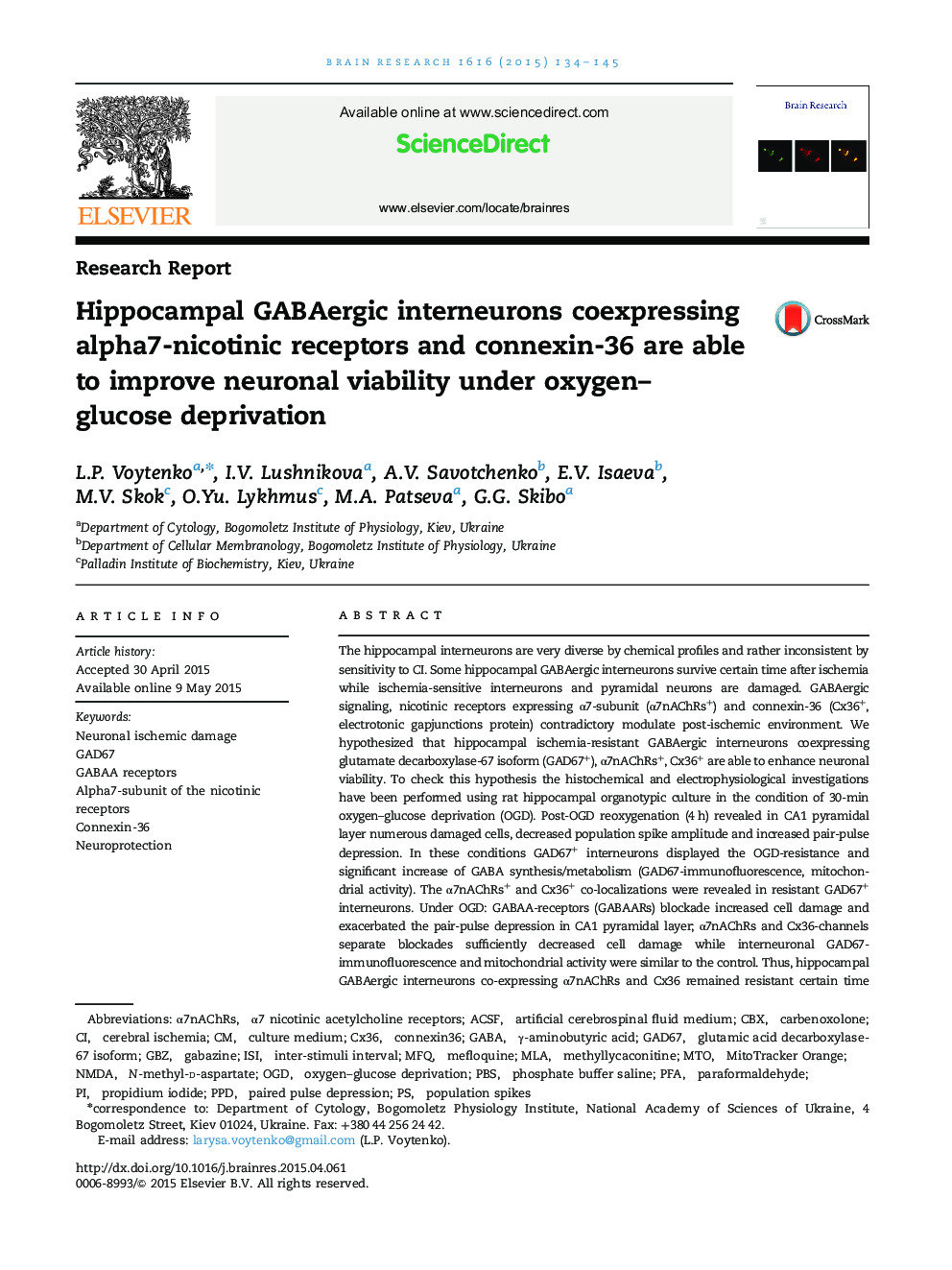| کد مقاله | کد نشریه | سال انتشار | مقاله انگلیسی | نسخه تمام متن |
|---|---|---|---|---|
| 6263003 | 1613823 | 2015 | 12 صفحه PDF | دانلود رایگان |

- Hippocampal GAD67+ interneurons are activated in oxygen-glucose deprivation (OGD).
- α7nAChRs and connexin-36 are colocalized in OGD-resistant GAD67+ interneurons.
- Blockade of either α7nAChR or connexin-36 increases cell survival upon OGD.
- Blockade of α7nAChR or connexin-36 normalizes GABA synthesis/metabolism in OGD.
- Revealed neuroprotective mechanisms may improve the efficiency therapy at ischemia.
The hippocampal interneurons are very diverse by chemical profiles and rather inconsistent by sensitivity to CI. Some hippocampal GABAergic interneurons survive certain time after ischemia while ischemia-sensitive interneurons and pyramidal neurons are damaged. GABAergic signaling, nicotinic receptors expressing α7-subunit (α7nAChRs+) and connexin-36 (Cx36+, electrotonic gapjunctions protein) contradictory modulate post-ischemic environment. We hypothesized that hippocampal ischemia-resistant GABAergic interneurons coexpressing glutamate decarboxylase-67 isoform (GAD67+), α7nAChRs+, Cx36+ are able to enhance neuronal viability. To check this hypothesis the histochemical and electrophysiological investigations have been performed using rat hippocampal organotypic culture in the condition of 30-min oxygen-glucose deprivation (OGD). Post-OGD reoxygenation (4 h) revealed in CA1 pyramidal layer numerous damaged cells, decreased population spike amplitude and increased pair-pulse depression. In these conditions GAD67+ interneurons displayed the OGD-resistance and significant increase of GABA synthesis/metabolism (GAD67-immunofluorescence, mitochondrial activity). The α7nAChRs+ and Cx36+ co-localizations were revealed in resistant GAD67+ interneurons. Under OGD: GABAA-receptors (GABAARs) blockade increased cell damage and exacerbated the pair-pulse depression in CA1 pyramidal layer; α7nAChRs and Cx36-channels separate blockades sufficiently decreased cell damage while interneuronal GAD67-immunofluorescence and mitochondrial activity were similar to the control. Thus, hippocampal GABAergic interneurons co-expressing α7nAChRs and Cx36 remained resistant certain time after OGD and were able to modulate CA1 neuron survival through GABAARs, α7nAChRs and Cx36-channels activity. The enhancements of the neuronal viability together with GABA synthesis/metabolism normalization suggest cooperative neuroprotective mechanism that could be used for increase in efficiency of therapeutic strategies against post-ischemic pathology.
Journal: Brain Research - Volume 1616, 7 August 2015, Pages 134-145